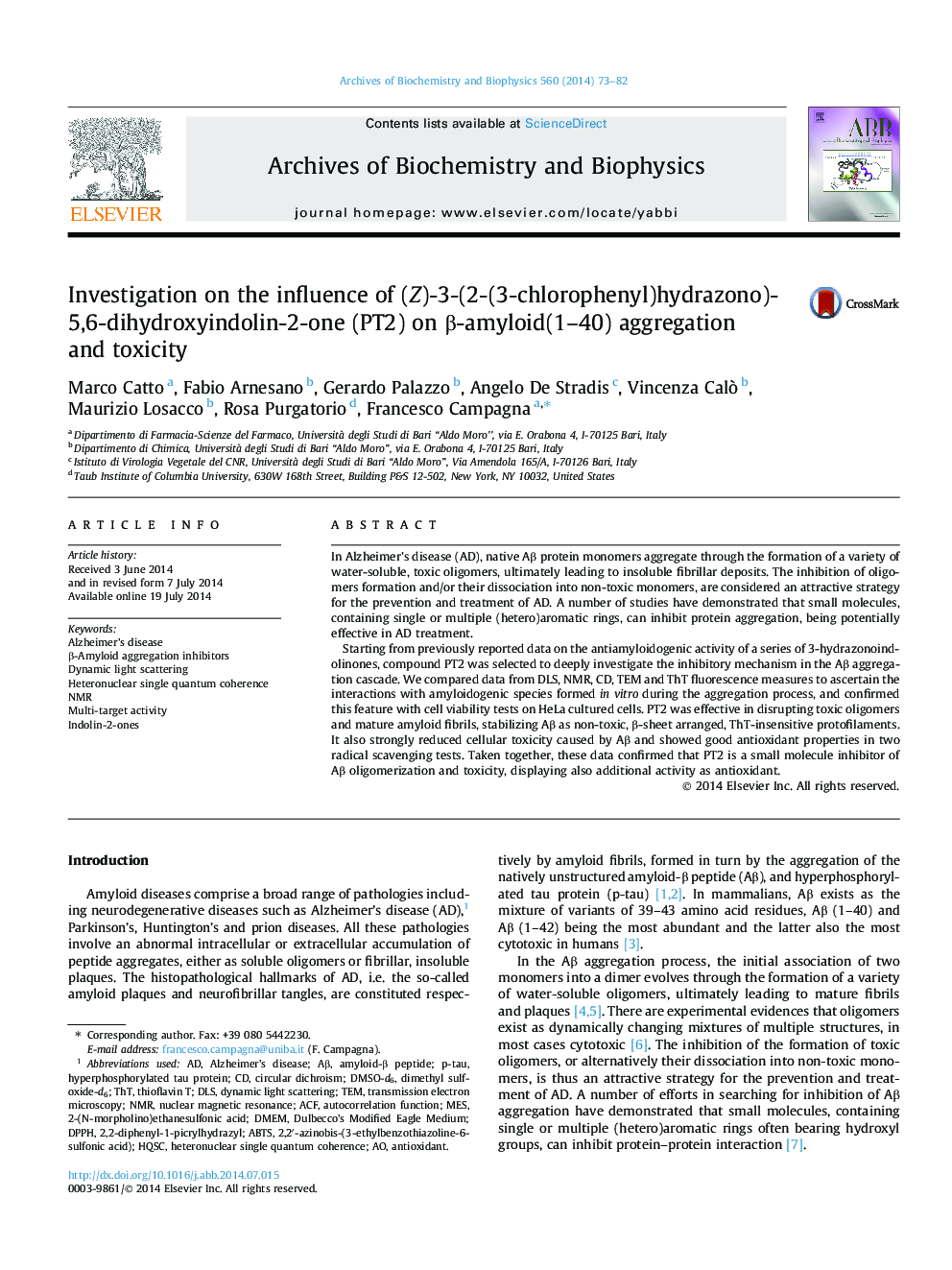| Article ID | Journal | Published Year | Pages | File Type |
|---|---|---|---|---|
| 1925094 | Archives of Biochemistry and Biophysics | 2014 | 10 Pages |
•The antiamyloidogenic effect of PT2 has been studied by means of different methods.•PT2 interferes with oligomerization and acts as destabilizer of mature fibrils.•PT2 has good cytoprotective effects in in vitro cell viability and antioxidant tests.
In Alzheimer’s disease (AD), native Aβ protein monomers aggregate through the formation of a variety of water-soluble, toxic oligomers, ultimately leading to insoluble fibrillar deposits. The inhibition of oligomers formation and/or their dissociation into non-toxic monomers, are considered an attractive strategy for the prevention and treatment of AD. A number of studies have demonstrated that small molecules, containing single or multiple (hetero)aromatic rings, can inhibit protein aggregation, being potentially effective in AD treatment.Starting from previously reported data on the antiamyloidogenic activity of a series of 3-hydrazonoindolinones, compound PT2 was selected to deeply investigate the inhibitory mechanism in the Aβ aggregation cascade. We compared data from DLS, NMR, CD, TEM and ThT fluorescence measures to ascertain the interactions with amyloidogenic species formed in vitro during the aggregation process, and confirmed this feature with cell viability tests on HeLa cultured cells. PT2 was effective in disrupting toxic oligomers and mature amyloid fibrils, stabilizing Aβ as non-toxic, β-sheet arranged, ThT-insensitive protofilaments. It also strongly reduced cellular toxicity caused by Aβ and showed good antioxidant properties in two radical scavenging tests. Taken together, these data confirmed that PT2 is a small molecule inhibitor of Aβ oligomerization and toxicity, displaying also additional activity as antioxidant.
Graphical abstractFigure optionsDownload full-size imageDownload high-quality image (111 K)Download as PowerPoint slide
